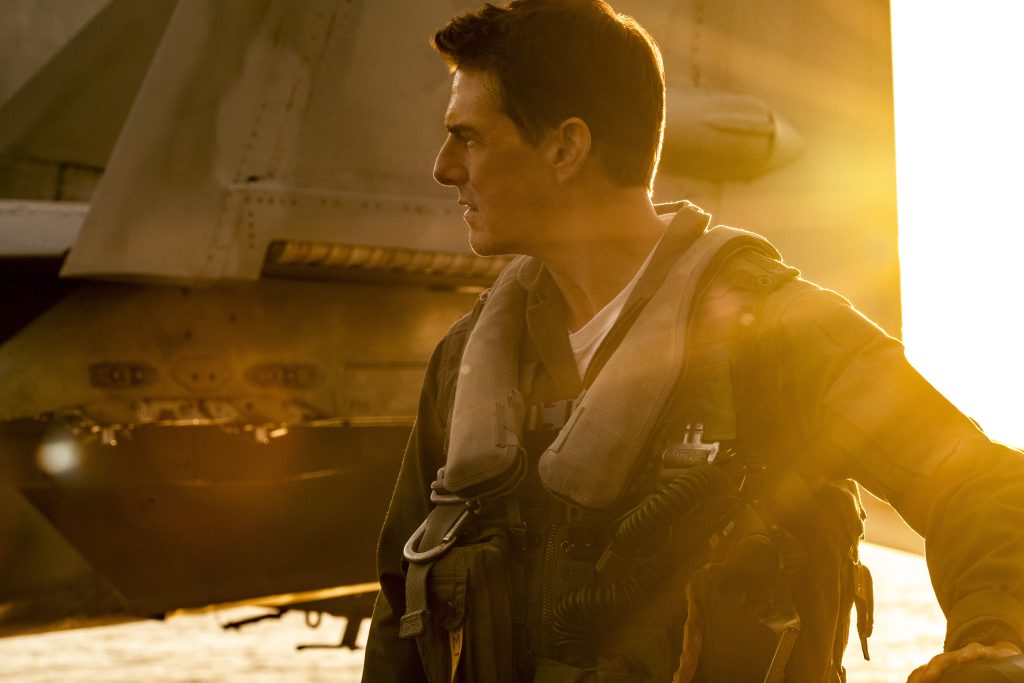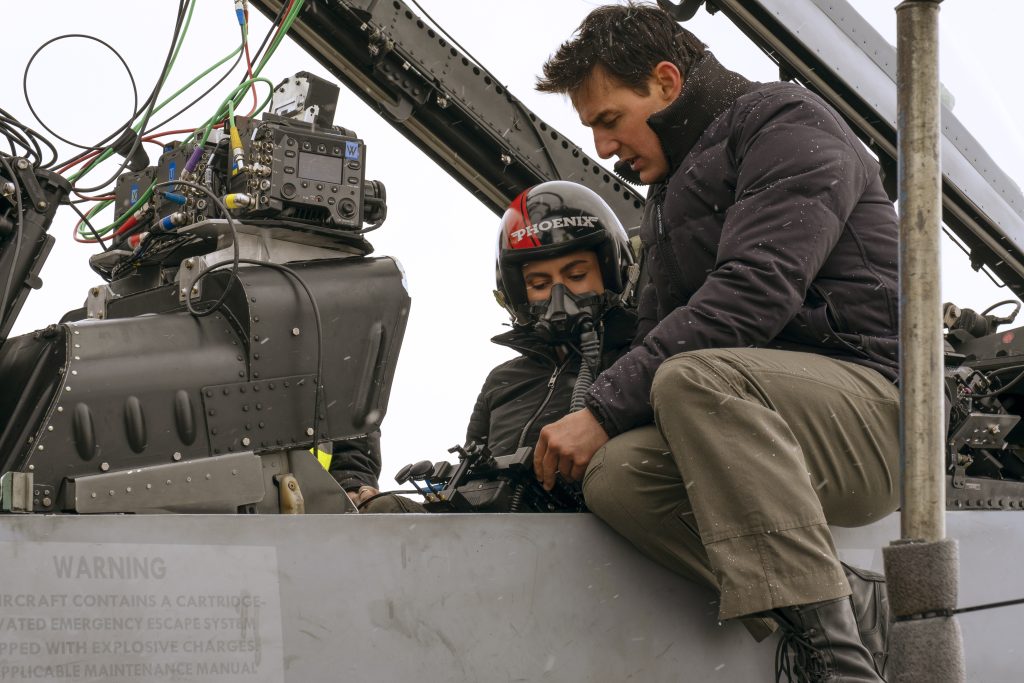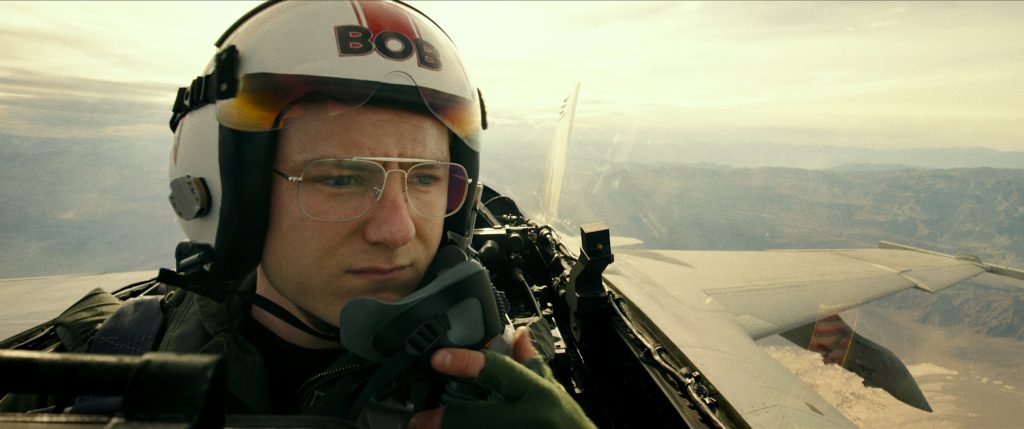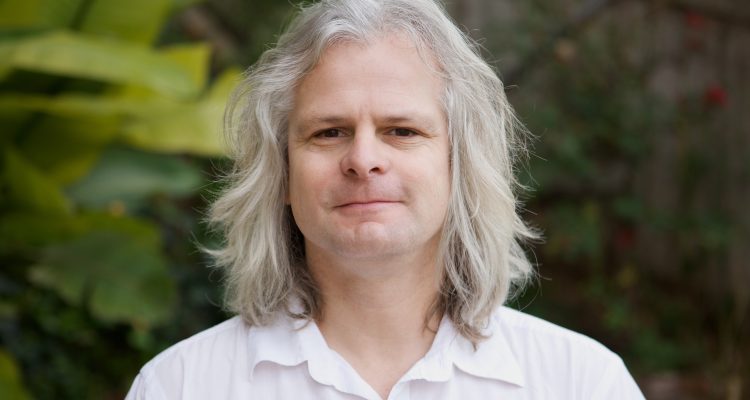Last year’s highest-grossing hit, Top Gun: Maverick, marked Oscar-winner Claudio Miranda’s fifth feature film collaboration with director Joseph Kosinski, having previously worked together on the Tom Cruise starring Oblivion and Netflix’s Spiderhead.
“Joe and I are always trying to do something different,” shares Miranda. “We want to figure out what the new movie is, how to make it unique, and, with this one, it was important to honor the Top Gun theme.”
The record-breaking sequel finds Tom Cruise returning as Captain Pete “Maverick” Mitchell as he leads a team of world-class pilots on a potentially fatal mission. Miranda experimented with various planes and cameras, eventually placing six interior cameras in an older version of an F-18 jet. This allowed the team to capture never-before-seen images and thus take action cinema to completely new heights.
“One time the cameras were shaking so much one actually failed on us,” admits Miranda. “When the jets are pulling seven and a half G’s, sometimes the wings are buffeting, and there’s a high vibration, and you’re recording all that. It’s like a great mess, and that mess makes you excited”.
Careful viewers can even spot the camera and its battery in the cockpit scenes. “We wanted to make sure the audience knew this is the real thing, and we decided to leave them in there,” explains Miranda.
But the movie was always made with the audience in mind. The stunning aerial fight sequences aren’t intended to distract from the film’s emotional core. Maverick’s journey to redemption as he reconnects with his late wingman’s son Rooster, played by Miles Teller, is as powerful as the thunder of the jets maneuvering through narrow canyons.
Miranda spoke to Awards Focus about the process of rigging six cameras in a cockpit, the advice he received from the original Top Gun cinematographer Jeffrey L. Kimball and capturing Val Kilmer’s return as Admiral Tom “Iceman” Kazansky.

Awards Focus: Did you have a call sign during filming? If so, what was it?
Claudio Miranda: [laughs] Yeah, they called me Gandalf. Cause I have long hair.
AF: What’s the biggest lesson you learned from the experience of making this film?
Miranda: I wanted to feel what it is like to be a pilot. I flew around a little bit and flew to some of the bases where the L-39s were. Then I got to experiment with some of the Alpha 39 planes. It’s like a little fighter plane. It became our camera ship for the movie. I thought, “Why not become a pilot?”
AF: You have actors going up in these jets, switching on the cameras in the air by themselves, doing their own hair and makeup. Could you talk about achieving that and prepping them for that whole process?
Miranda: We rehearsed in a wooden cockpit on the ground. That was just all rehearsals. In the beginning, I would tell them where the light should be. I put a little lamp there just to remind them. The pilot was there, too. Joe would work the scene, and I would go over the routes they’d be taking for the morning runs to ensure the light was correct according to how deep they would be going into the canyon. We scouted all these canyons and had a morning plan and then a sunset plan.
AF: How difficult was it matching their eyelines?
Miranda: We told them where they were and where the other planes would be. Sometimes there was another plane; sometimes, there wasn’t. Sometimes it was imagination; sometimes, it was just real. We had two planes that had all the cameras inside them. Most of the time, they were by themselves. It gets really tricky to have planes really close. Planes flying low together through canyons – we didn’t do that. We didn’t blow up any planes either. [laughs] That’s all thanks to Ryan [Tudhope, visual effects supervisor].
AF: Did you speak with the original Top Gun cinematographer Jeffrey L. Kimball?
Miranda: I remember Tony used to shoot anamorphic for everything. I just assumed that the first movie was shot on anamorphic. I spoke to Kimball, and he told me, “No, we shot spherical.” Mainly because of weight and close focus, the camera lenses had to be small and also for a little bit more variety.
When the lens weighs ten pounds, and you’re pulling seven G’s, then that same lens now weighs seventy pounds. That put anamorphic out of the questions for us. Some of the lenses we used were almost an inch thick, just because of where we had to put them in the cockpit.
I asked Kimball about ground-to-air, and he said it was a mixture of ground-to-air and air-to-air. But they didn’t do that much in the cockpit at the time with the real actors, so that was something very new for us. It was nice to have real actors in the planes.
AF: What was the process of getting six cameras into the cockpit of a jet?
Miranda: I did a lot of experimenting. I got my pilot’s license and put some cameras in to try and figure out where I wanted to put them. There are two reasons for the experimenting, firstly, to see where I wanted the cameras to be, and secondly, I wanted to take pictures on my rig and tell the Navy, “Hey, this is what I want to do. This is what we’re thinking.” Originally, the Navy said, “You’ll never get six cameras in there.”
I thought, let’s work through it slowly. I just sat there with them for a couple of days, going, “What’s this? Can we remove this?” And it was like a video camera. Well, you don’t need that. We’re shooting everything. And they would just be pulling things off, so much so that we got everything on.
I found an old version of an F-18 that had lots of room to put stuff in. It was a certain version of an F-18 that was really helpful to us. Once I found that plane, all the lights went off.
AF: Was one of the challenges trying to capture something moving so fast? Is it true that you mounted rifle scopes to cameras to help spot the planes?
Miranda: We did because it was easier to track them that way. The camera crew built their own little sights. Sometimes there’s a delay in the feed. Even a one-frame delay could cause you to miss it. That’s what they actually did on the original Top Gun. They had scopes and sights for tracking. These planes are coming at you so fast.

AF: There were days when you had many cameras going. Was it something like 27 cameras running at one point?
Miranda: Something about like 27. We had two planes that had interior cameras, and both had six cameras each. Then we had another plane with exterior cameras, potentially three to four cameras on that. Then there were two mountain crews, two cameras on each team, so that’s four. Then we had aerial – helicopter and jet running. And if we were also shooting a normal scene on the ground, that’s two to three cameras.
AF: Does that split your focus?
Miranda: We plan that when we’re not shooting. We had it all mapped out. That was all prep. So basically, we’re all just executing the plan at that point.
AF: On a film that has so many stunning shots, is there one shot, in particular, you can’t believe you captured, like a lightning in a bottle moment?
Miranda: I do love the part where the Dark Star takes off, and it blows the roof off, which actually did happen. I initially thought we’d have to fix that, but they kept it in.
AF: I’ve seen you talk about how movies nowadays sometimes go for this gazelle-like perfection, but this sort of human perfection is what really makes a connection instead. Could you expand on that?
Miranda: Joe and I are always focused on making this as real as possible. When you’re in there, the planes are flying twenty feet off the ground, and the cameras are shaking. With CGI, it would feel very floaty and perfect.
Even operating the camera when people on the ground are trying to capture the jet. In CGI, you can make it perfect. You never miss. But trying to capture this jet flying by at 600 miles an hour that’s super tough, and that chaos in the frame, I think, builds the excitement.
AF: Could you talk about working with Val Kilmer, who reprises his role as Admiral Tom “Iceman” Kazansky?
Miranda: Val was such a sweetheart. At the same time, he was going through his own health issues with his voice and surgery. It was hard for him to talk. As I’m looking at the scene, I get teary. There’s a connection between what’s happening in his life and what’s happening in the scene. It makes it feel more real. That became really strong and powerful. And also the connection they had in the room. I thought that was really special.
Do you know who I really loved character-wise? I love Lewis Pullman’s Bob. He’s like a funny, nerdy guy. I love the way Lewis played him. There’s something great about Bob and how he sits by the pool when we first see him. And I loved having Lewis as a roommate on the Roosevelt. That’s an extra special thing.

AF: What was that experience like being on the aircraft carrier Roosevelt?
Miranda: I was on the Lincoln first, two weeks by myself. We lived on the ship. It’s interesting to have a bunkmate at the age plus 50. But the ship’s a whole city. They create their own water and power; if they needed to, they could use their generator to power a small city. I think they did that for Haiti.
AF: You and Joseph Kosinski are continuing your very fruitful collaboration. One of those future projects is set in the world of Formula One racing. Is there anything you can share about that? Are you again putting cameras in places they’ve never been before?
Miranda: We’re trying. We’re trying to keep it as real as possible. I’m working with camera manufacturers to see how small they can go, trying to get the quality as high as we can. I feel with F1 that we’re going to have to use smaller and lighter cameras to get them in new places.


